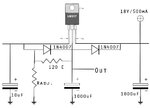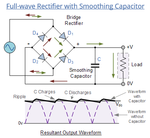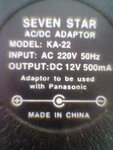rajaram04
Advanced Member level 3
Hello sir
i am using LM317 as voltage regulator to get a 9 volts o/p & at the I/p i am applying 18 volt dc out from a bridge rectifier
I followed all type of diagrams available all around but the output level is going down (with no load & too load condition)
the whole assembly is on bread board
please help me in solving the issue
i am using LM317 as voltage regulator to get a 9 volts o/p & at the I/p i am applying 18 volt dc out from a bridge rectifier
I followed all type of diagrams available all around but the output level is going down (with no load & too load condition)
the whole assembly is on bread board
please help me in solving the issue


